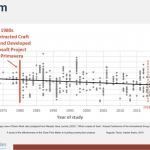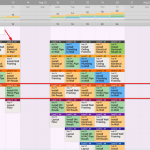Identifying and clearing constraints early and often is key to running smarter projects. Often little things that go unnoticed can lead to big headaches. We’ve all experienced it. A permit is tied up in review because of some missing information. A critical activity is held up while awaiting design clarification… or material delivery… or both. A crew works shorthanded because some team members are double booked.
Many construction teams have resigned themselves to the idea that this kind of stuff just happens, that every job just has it’s glitches, and that the best way to deal with it is to build in contingency. Identifying and addressing issues before things get out of hand is, of course, recognized as ideal, but the reality is: construction projects are complicated, project teams are highly dependent on each other, and often my greatest risk is that you will not finish your work in time for me to start my piece. And given that I have zero control over how you perform your work, of course I’m going to build in contingency.
So, what’s wrong with that, you ask. Well, for starters contingency costs money – lots of money – especially if we are all baking it in. And then on top of that, there is no way to know in advance how much contingency is enough. I can bake some in for my piece of the project and still get in trouble if I don’t have enough. I can also bake in too much and possibly not get the job because my price is too high.
Smarter run projects run smoother with far less contingency baked in. Instead of relying on everyone to identify and manage their risk individually, project teams recognize that they all share the same project risk, and they work together to identify and manage it together. They move away from assigning blame when issues arise and elevate their discussion to figuring out how to deal with challenges together. They are also collectively on the lookout for issues that affect the project, not just their piece of the project.
A central element of smarter run projects is the project team’s almost fanatical obsession with identifying and clearing constraints well ahead of when work is planned. Sometimes referred to as “making work ready”, project teams spend time every week looking 3 to 6 weeks out and collectively ask themselves “Are there any open issues that we need to address before we can do the work we are planning?” Perhaps an RFI response is required, or a material delivery is needed. Maybe a coordination meeting needs to happen, or a mockup needs to be approved. Whatever the issues, everyone works together to identify them and assure that they are addressed before they become problematic.
The goal, of course, is to keep from identifying issues late by getting in front of them early. By working together, teams are able to spot things individuals might miss. Team members also learn from each other and begin thinking about what goes into “making their own work ready” in ways they might not have considered before.
The result is a more reliable project plan with fewer surprises and last-minute fire drills. Team members are able to more effectively staff their work because they know with a much higher degree of certainty when they will be able to get in and do what they have to do. Overall workflow is also improved because individual team members no longer need to “pad” their duration estimates to deal with unreliable planning.
At your next weekly team meeting, take a few minutes to have everyone look 3 to 6 weeks out and think about what is needed to prepare for the work to come. Write it down and have someone take ownership for each item. The following week, review the list, get an update on status, strike off completed items, and then repeat the process of looking 3 to 6 weeks out and adding to the list. You’ll be amazed at how much smoother things begin to run.










